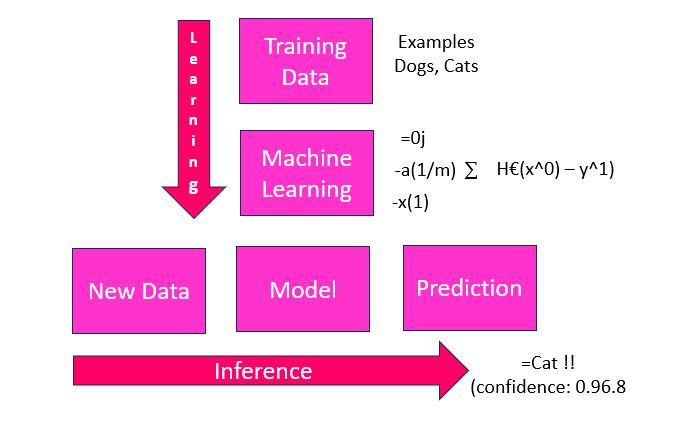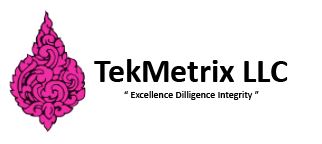TekMetrix Generative AI
Approach to Artifical Intelligence
Albert Einstein defined intelligence as the ability to solve complex problems to achieve complex goals. Intelligence allows humans to function appropriately and with strategic foresight. Intelligence allows humans to understand and generate language, preceive and respond to sensory outputs, play challenging games, synthesize and summarize information and form a culture of art, music and beliefs.
Artifical intelligence is intelligence exhibited by non-biological systems. Narrow AI is the ability to accomplish a set of goals, i.e, a model that excells classifying animal picutres cannot plan on line chess. Strong AI is the ability to understand, by non-biological systems, and learn any intellectual task that a human can perform.
Symbolic AI was a first attempt at AI by explicitly representing knowledge through rules, expert systems and deterministic programming. If, then, else rules and coding to which there remain many applications in industry. However in todays complex problems there are not enought rules that can be programmed in this way. Probababilistic machine learning is where we learn from examples in the data without being explicitly programmed. The figure below is an example of supervised learning.

Supervised learning is training a model with labeled examples. The output is regression and classification. Unsupervised learning is performed on data which is not labeled. The output of unsupervised learning is clustering, and diminsionality reduction. Example, fraud detection. Yet another example of an approach ot artifical intelligence is reinforcement learning. Reinforcement learning is performed where Agents observe the environment, perform actions and are rewarded or penalized. Outut of reinforcement learning is an Agent that learns to take the best action for the situation. Computers that can play chess or gaming are examples of reinforcement learning.
Referring back to generative AI and self-supervised learning. Self-supervised machine learning is a subset of unsupervised maching learning and is used to solve problems such as image classification, object detection and natural language processing. Examples of self-supervised learning include approached to autoencoders, contrastive learning and predictive coding.
Generative AI
Generative AI possibly represents a coming AI driven global economic revolution. There is the potential to add trillions of dollars to the global economy with Generative AI. Estimates range from $2.6 to $4.5 trillion dollars in value will be added to the global economy with Generative AI.

Foundation models are measured in billions of parameters (learning rate, batch size, number of epochs, optimizer) and trained on billions and trillions of tokens ( a word for example). Foundations models are stateless. Performance and capabilities scale as models increase in size. This approached represents a change in approach. Previously only 1 model was trained to perform 1 task. With generative AI, AI moves from supervised to self-supevised learning. AI moves from single purpose to multi-purpose scenarios. Users can interact with the model without alot of technical knowledge. Large language models can:
- Classification, entity extractions
- Summarization
- Search and Q&A
- Content creation (images, music, video)
- Code generation
Adoption of Generative AI for Business Results
Limitations
There are current limitations of Generative AI. Large language models can produce results which appear accurate when they in fact wrong. The industry terms this as hallucination. The same question in different languages can product different results. This makes it difficult to trust large language models. Another issue is that the knowledge of the model is frozen in time from when it was trained. Large language models are not calculators. Mathematics prompts are limited and must be checked for accuracy.
Methods to Adapt Generative AI to a Business
Prompt engineerig will provide more information to describe the task, described as zero shot and few-shot learning. The second approach is Retrieval Augmented Generation (RAG) whereby we seek to extend to the external domain knowledge by retrieving and injecting information by embeddings, knowlege graph and search, providing references. A third approach, experimental, are the use of Orchestration Tools. These are agents, functions, plug-ins, prompt and model chaining and memory. The model can be retrained, by fine tuning. Reinforcement Learning with Human Feedback (RLHF) incorporates a human preference to inprove the quality and adjust weights after initial training.
It is important to have a human check model outputs. Testing and continuous feedback and monitoring are required to improve model results.
Extending SAP Enterprise Architecture with Generative AI
The SAP AI Foundation on the Business Technology Platform (BTP) provides AI delevelopers with a complete set of services for creating and embedding AI applications in enterprise business processes. The BTP reference architecture, as a Generative AI Hub, provides AI Lifecycle Management Services for:
- Generative AI management
- Toolsets
- Trust and control
- Access
- AI Workload management
- Training
- Inference
- Business data and context
- Vector probability engine
- Data management
- Foundation models SAP Built
- Foundation Models TekMetrix built
- Document processing
- Predictions
- Machine translation
- SAP Fiori, SAP HANA Cloud (OData)
Generative AI Business Case
New AI capabilities drive business value. Automation of machines to perform repetitive tasks that humans do. A natural user experience facilitates human-machine interaction. AI insights, optimizations and predictions augment human decisions and cognition. Ever increasing data volumes can be leveraged with AI to optimize supply chain demand forecasting, cycles and product profitability.
TekMetrix AI applications will extend CPG business processes for:
- Demand planning
- Price planning
- Trade promotion planning
- Trade promotion optimization
- Advanced trade management analytics
- Intelligent claims management
- Revenue planning
- COGS planning
- SG&A planning
Enterprise tools are TekMetrix solution accelerators, OpenSource, S4, BW4, Native, Enterprise HANA, SAC, PaPM, PAK, R, MATLAB, TPM tools.


